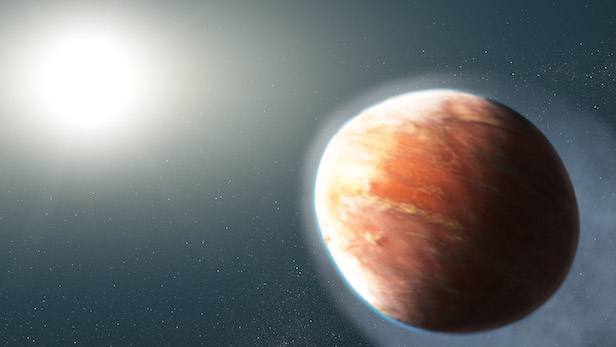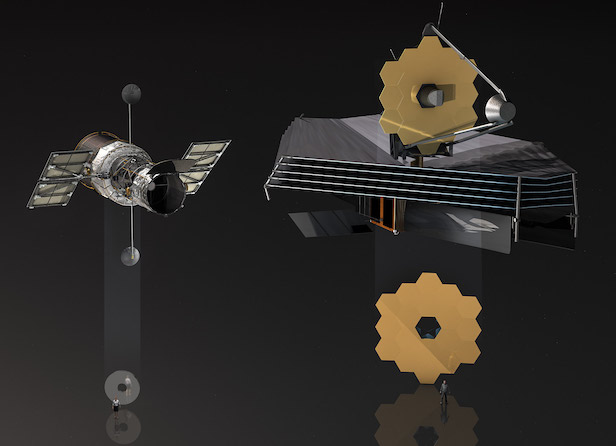Astronomers spot a ‘football-shaped’ exoplanet kicking out heavy metals
The hot-Jupiter WASP-121b has metals such as iron and magnesium flee the host planet due to its weak gravity

The atmosphere of a planet about 900 light years from Earth is so hot that vapourised metal escapes it, while intense gravity of the planet’s host star has deformed it into a football shape. Image credit: NASA/ESA/J. Olmsted (STScI)
The scorching hot exoplanet WASP-121b may not be shredding any heavy metal guitar riffs, but it is sending heavy metals such as iron and magnesium into space. The atmosphere of the planet about 900 light years from Earth is so hot that vapourised metal escapes it. Meanwhile, the intense gravity of the planet’s host star has deformed the sizzling world into a football shape.
The new observations from an international team of astronomers using NASA’s Hubble Space Telescope describe the first known instance of heavy metal gas streaming away from a “hot Jupiter.” That’s the nickname for large, gaseous exoplanets that orbit very close to their host stars. A research paper describing the results, co-authored by University of Maryland astronomy Professor Drake Deming, was published recently in The Astronomical Journal.
“This planet is a prototype for ultra-hot Jupiters. These planets are so heavily irradiated by their host stars, they’re almost like stars themselves,” says Deming. “The planet is being evaporated by its host star to the point that we can see metal atoms escaping the upper atmosphere where they can interact with the planet’s magnetic field.”
Normally, hot Jupiter planets are still cool enough inside to condense heavier elements such as magnesium and iron into clouds that remain in the planet’s atmosphere. But that’s not the case with WASP-121b, which orbits so close to its host star that the planet’s upper atmosphere reaches a blazing 2,500 degrees Celsius (4,600 degrees Fahrenheit). The planet is so close, in fact, that it is being ripped apart by the star’s gravity, imparting an oblique football shape.
Heavy metals have been seen in other hot Jupiters before, but only in the lower atmosphere, said lead researcher David Sing of Johns Hopkins University.

The combined power of the Hubble Space Telescope and the James Webb Space Telescope could reveal remarkable details about the chemical composition of exoplanets. Image credit: ESA/M. Kornmesser
“With WASP-121b, we see magnesium and iron gas so far away from the planet that they’re not gravitationally bound,” says Sing. “The heavy metals are escaping partly because the planet is so big and puffy that its gravity is relatively weak. This is a planet being actively stripped of its atmosphere.”
The researchers used Hubble’s Space Telescope Imaging Spectrograph to search for ultraviolet light signatures of magnesium and iron. These signatures can be observed in starlight filtering through WASP-121b’s atmosphere as the planet passes in front of its host star.
According to the researchers, WASP-121b will be a perfect target for NASA’s James Webb Space Telescope, scheduled for launch in 2021. The combination of Hubble and Webb observations should give astronomers a more complete inventory of the chemical elements that make up the planet’s atmosphere.
“Hot Jupiters this close to their host star are very rare. Ones that are this hot are even rarer still,” Deming adds. “Although they’re rare, they really stand out once you’ve found them. We look forward to learning even more about this strange planet.”
Keep up to date with the latest news in All About Space – available every month for just £4.99. Alternatively you can subscribe here for a fraction of the price!




